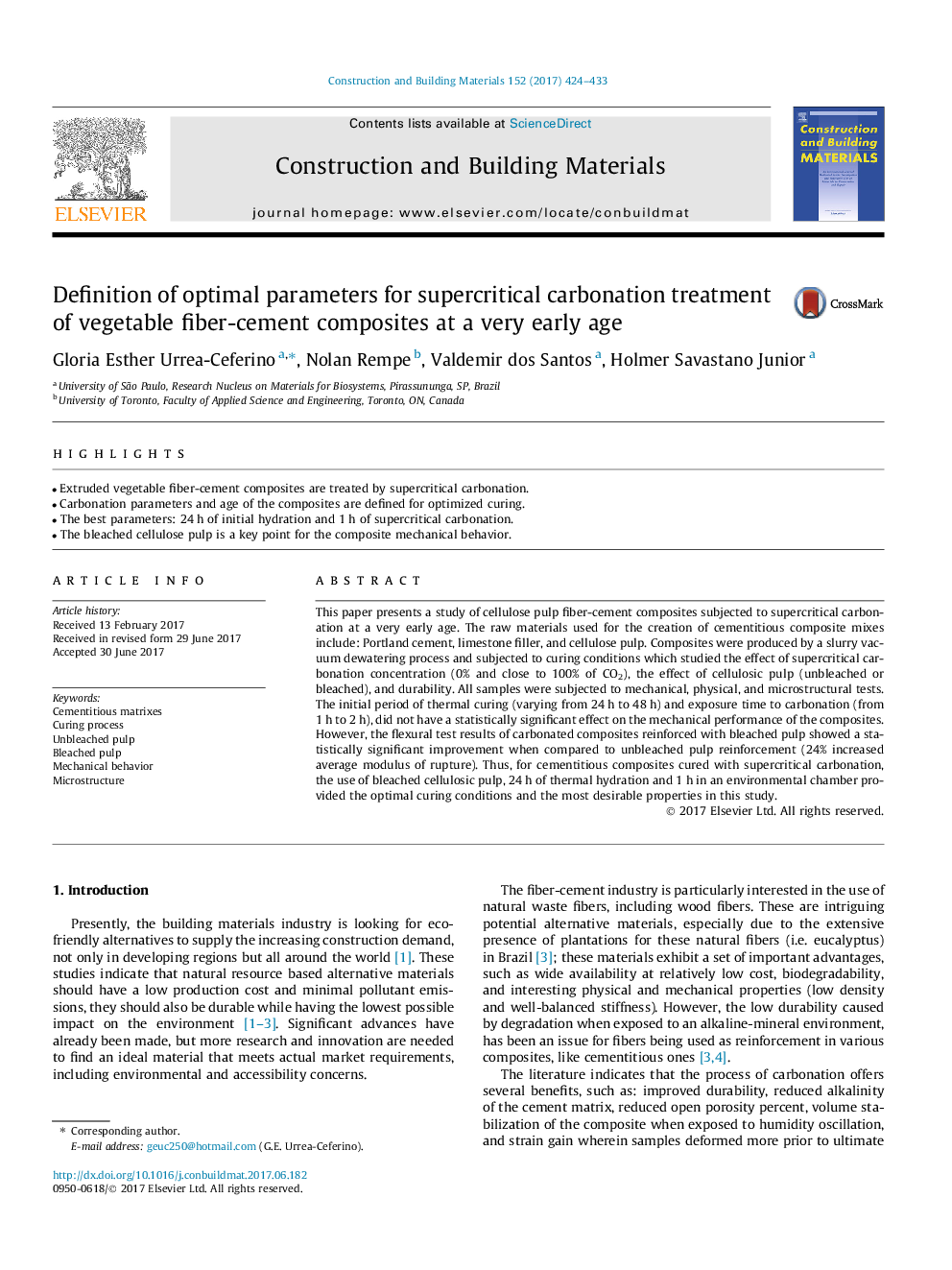| Article ID | Journal | Published Year | Pages | File Type |
|---|---|---|---|---|
| 4912781 | Construction and Building Materials | 2017 | 10 Pages |
Abstract
This paper presents a study of cellulose pulp fiber-cement composites subjected to supercritical carbonation at a very early age. The raw materials used for the creation of cementitious composite mixes include: Portland cement, limestone filler, and cellulose pulp. Composites were produced by a slurry vacuum dewatering process and subjected to curing conditions which studied the effect of supercritical carbonation concentration (0% and close to 100% of CO2), the effect of cellulosic pulp (unbleached or bleached), and durability. All samples were subjected to mechanical, physical, and microstructural tests. The initial period of thermal curing (varying from 24Â h to 48Â h) and exposure time to carbonation (from 1Â h to 2Â h), did not have a statistically significant effect on the mechanical performance of the composites. However, the flexural test results of carbonated composites reinforced with bleached pulp showed a statistically significant improvement when compared to unbleached pulp reinforcement (24% increased average modulus of rupture). Thus, for cementitious composites cured with supercritical carbonation, the use of bleached cellulosic pulp, 24Â h of thermal hydration and 1Â h in an environmental chamber provided the optimal curing conditions and the most desirable properties in this study.
Related Topics
Physical Sciences and Engineering
Engineering
Civil and Structural Engineering
Authors
Gloria Esther Urrea-Ceferino, Nolan Rempe, Valdemir dos Santos, Holmer Savastano Junior,
